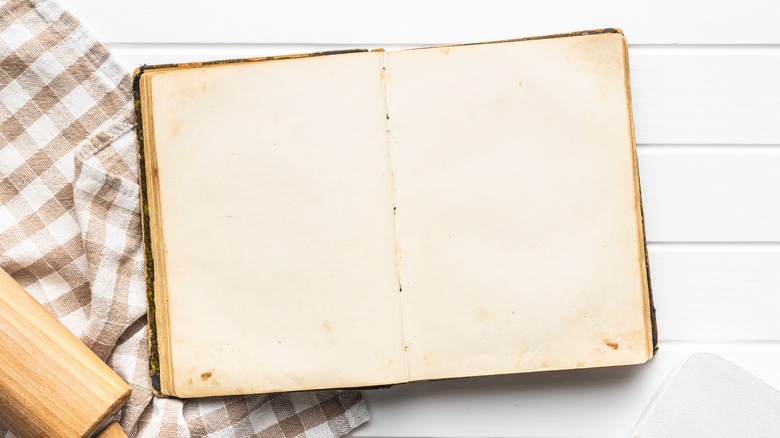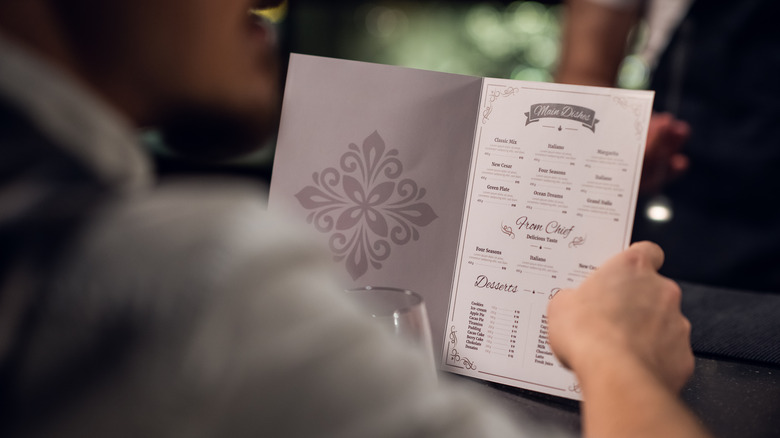One Of History's Oldest Surviving Menus Is From A Mesopotamian Feast
Menus are an integral component of dining out, celebratory or formal events, and in some cases, dining in at a highfalutin dinner party or a similar affair. Have you ever wondered how, when, or why menus were developed? At one point, did it become customary to print everything that was expected to be consumed? Was the notion of a formal dining event once without the constraints of menus? Is it most ideal to have the projected meal written down beforehand? We're intrigued by the notion of dining out without knowing what to expect on the dinner table.
The more contemporary approach to a menu may date back to about 1100 CE in China, where certain eateries would leave the decisions to patrons. Fast-forward to the 1700s, and restaurants with menus began to proliferate throughout France. Many paper menus appeared in Paris in the mid-18th century, signaling exactly what was available to diners (per OpenTable). Mental Floss notes that "menu" is a French word, derived from a Latin term meant to describe something "small and detailed."
But those origins may go back further to one high-society soirée that lasted 10 days during the Mesopotamian era.
The origins of the modern menu
The concept of a menu might actually date back to 879 BCE (per Mental Floss). In a supreme festival and 10-day meal, Assyrian king Ashurnasirpal II planned an immense event, described on a large stone tablet called a stele. The stele mentioned the range of foods and drinks that guests enjoyed over the 10-day celebration. Nowadays, of course, a menu is to outline the potential meal options at a singular dinner, but for King Ashurnasirpal II, the original menu was clearly something of a more opulent, historical vision.
It wasn't until the 1800s that the makeup of a menu shifted to reflect the culinary variation that we are familiar with today. Once the menu and the modern restaurant traveled to America and opened in New York City (via JSTOR), the menu as we know it today was formalized. Even a dedicated children's menu was eventually introduced in 1921 at the Waldorf-Astoria, according to Mental Floss.
Some restaurants even used to have menus only for female patrons — missing pricing altogether — in a bizarre blast of misogyny which obnoxiously assumed that only men would be paying for meals (thank goodness those menus this didn't last for long). Today, the modern menu offers a range of options for a variety of budgets and tastes. And we have King Ashurnasirpal II to thank as one of the original menu creators.

